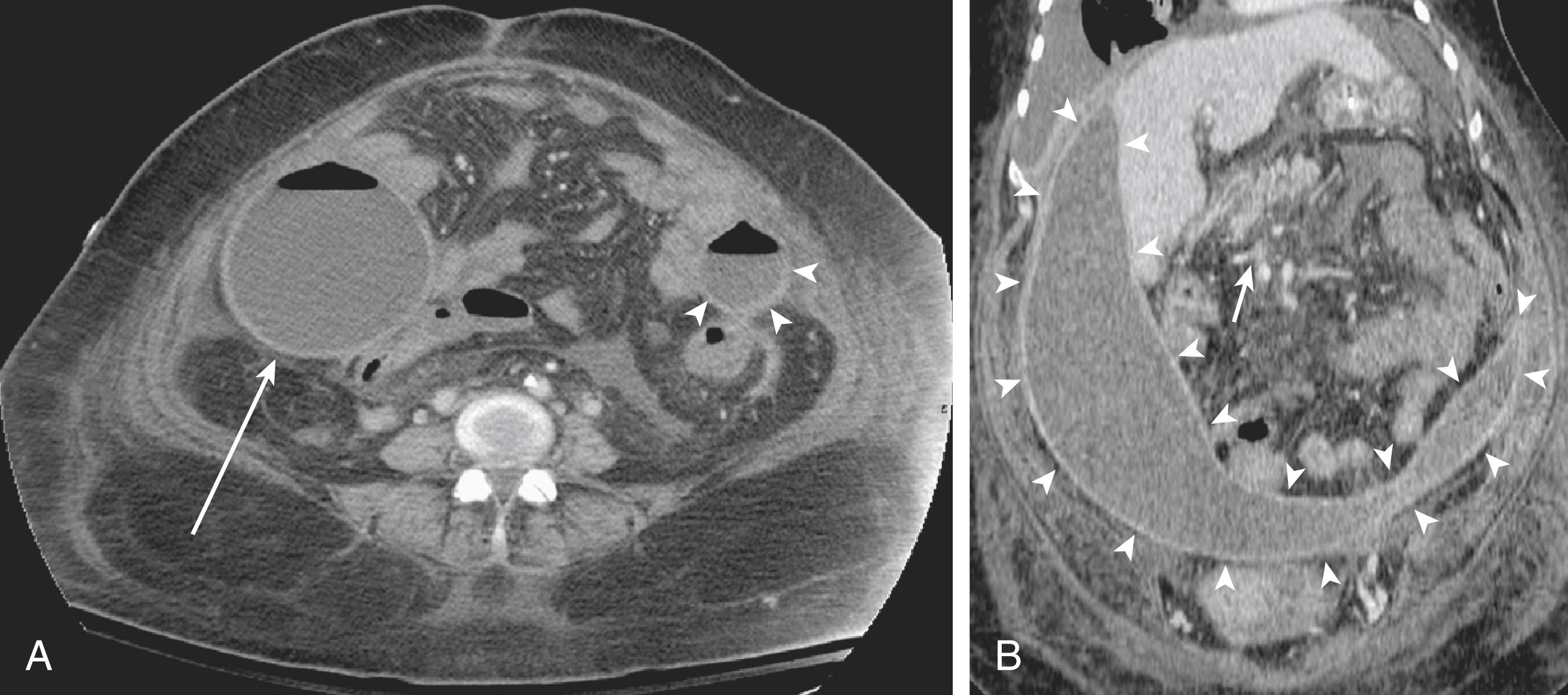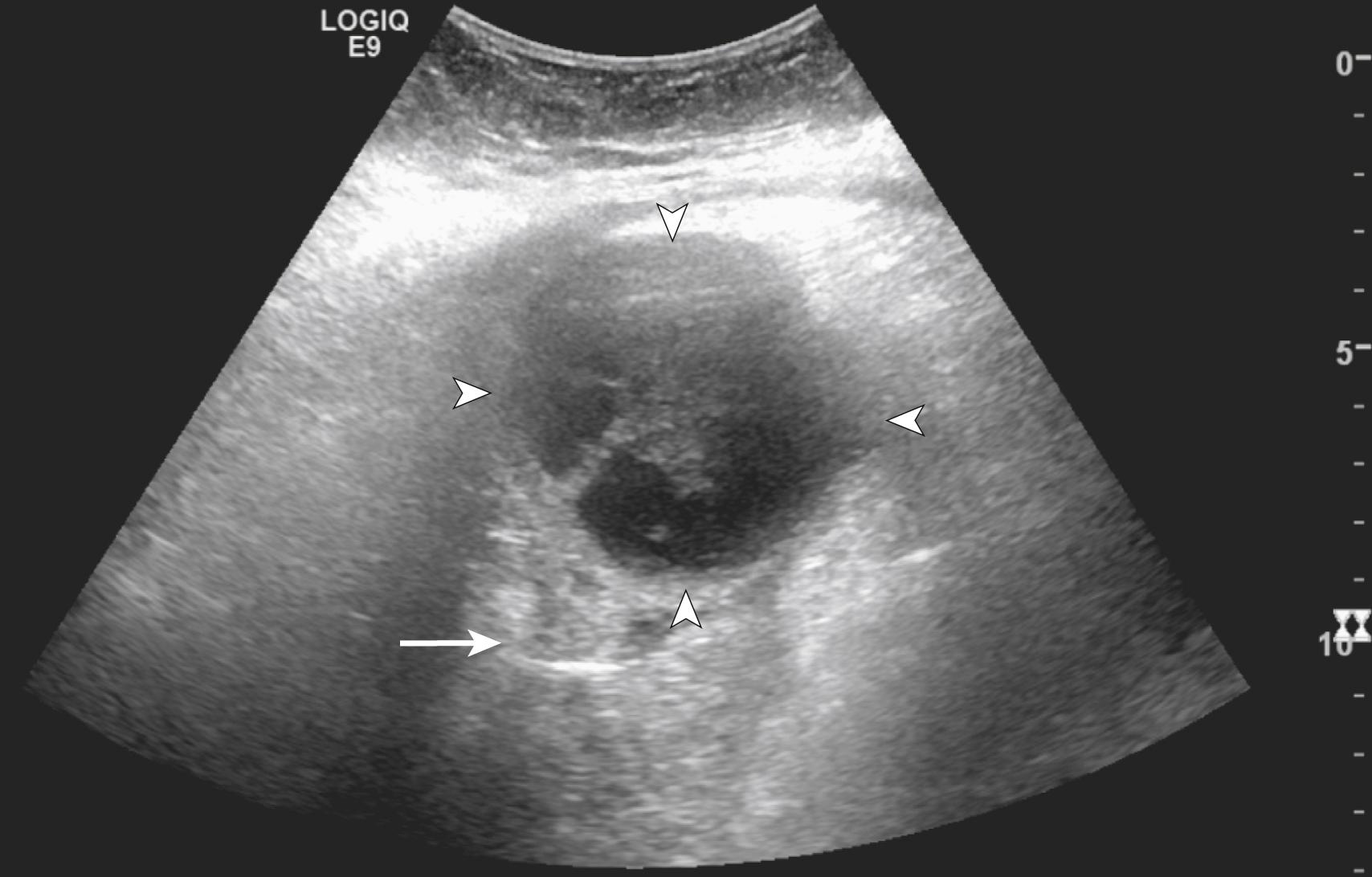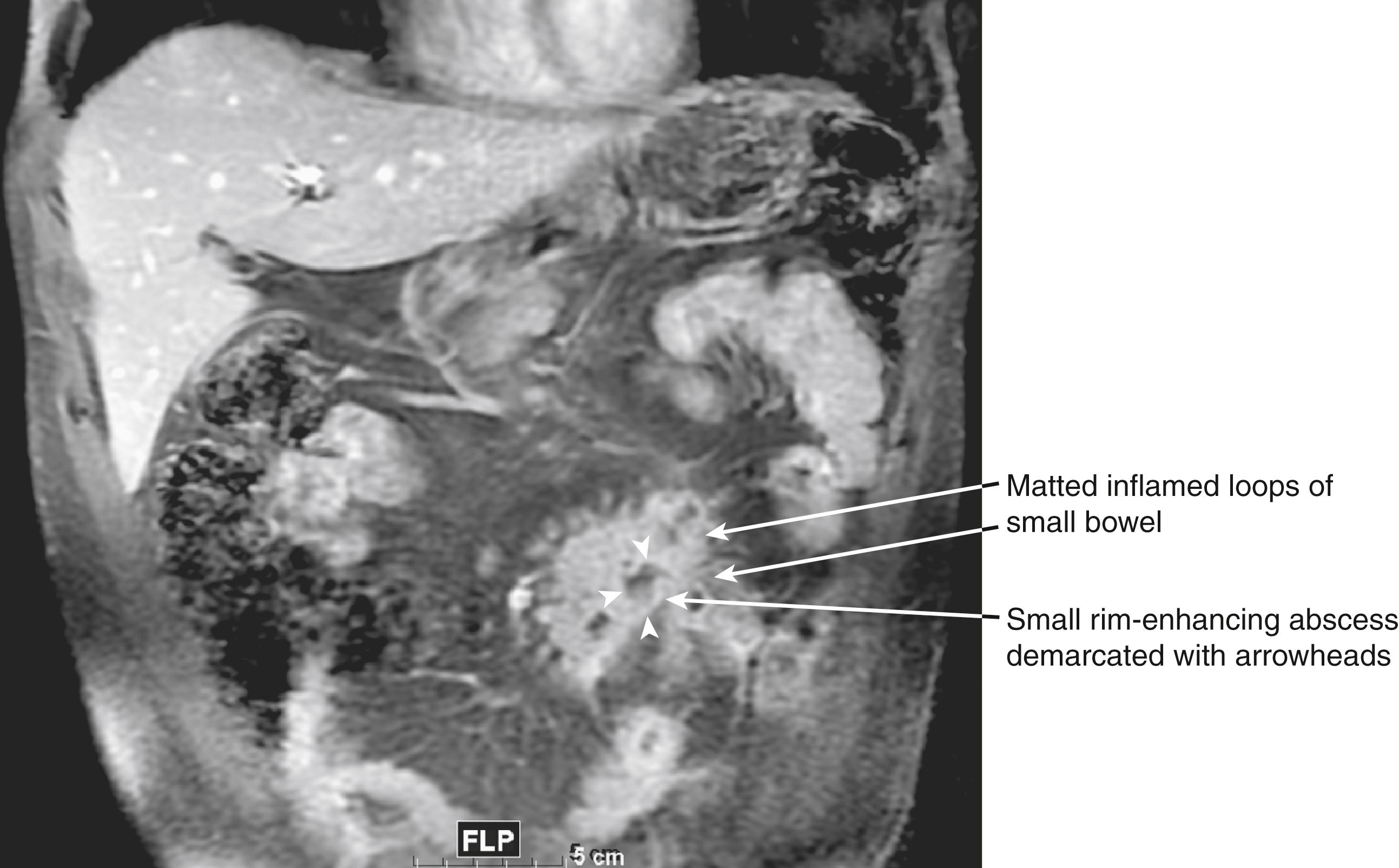Physical Address
304 North Cardinal St.
Dorchester Center, MA 02124
An intra-abdominal abscess (IAA) is a localized abdominal infection arising in the background of infectious peritonitis. Primary peritonitis (spontaneous bacterial peritonitis, discussed in Chapter 93 ) is not usually associated with development of abscesses, whereas secondary peritonitis , peritoneal infection due to an inflammatory process in the GI tract, is commonly associated with abscess formation (see Chapter 39 ). Most cases of IAA arise in the setting of secondary peritonitis due to bowel perforation ( Box 29.1 ). Tertiary peritonitis , a persistent or recurrent infection arising 48 hours after treatment of secondary peritonitis, often arises in the setting of preexisting comorbidities and may be associated with IAA (see Chapter 39 ). Abscesses in solid organs are discussed in Chapter 58, Chapter 61, Chapter 84 .
Abdominal trauma
Appendicitis
Cholecystectomy and other operations or invasive procedures
Crohn disease
Diverticulitis
Neoplastic disease
Pancreatitis
Perforated hollow viscus (e.g., duodenal or gastric ulcer)
Sterility in the peritoneal cavity is maintained when host defense mechanisms designed to clear bacterial contamination outweigh bacterial factors fostering microbial primacy. Bacteria commonly gain access to the peritoneal cavity through perforation of the intestinal wall. The bulk of these bacteria are delivered to the reticuloendothelial system for destruction via the continuous lymphatic drainage caused by function of the diaphragm. Lymphatic clearance is so efficient that abscess formation occurs when adjuvant substances such as hemoglobin, barium, or necrotic tissue are present. These adjuvant substances may block lymphatic vessels (barium, fecal particulate matter), provide bacterial nutrients (iron from hemoglobin), or impair bacterial killing, all fostering bacterial infection. Shortly after bacterial contamination, the predominant phagocytic cell types are peritoneal macrophages, which are also cleared by the lymphatic system. As bacteria proliferate, polymorphonuclear leukocytes invade the contaminated area and become more numerous. The resultant peritoneal inflammation leads to an increase in splanchnic blood flow, with protein and fluid exudation into the peritoneal cavity. The delivery of fibrinogen combined with the procoagulatory effects of the inflammatory process and reduced levels of plasminogen activator activity enhance fibrin deposition, leading to entrapment of bacteria and localization of infection. The peritoneal cavity contains numerous recesses, pouches, and potential spaces that allow for compartmentalization of abdominal infection to prevent further spread of infection and the dreaded occurrence of sepsis. Thus, abscess formation ultimately may be regarded as a means of controlling severe intra-abdominal infection.
Although peritoneal defense mechanisms can prevent the spread of bacterial infection, they can have adverse effects as well. Lymphatic clearance of bacteria may be so effective that it results in sepsis. Exudation of fluid into the peritoneal cavity can lead to hypovolemia and shock; it can also dilute the opsonins that target bacteria for phagocytosis. In addition, fibrin entrapment of bacteria can impair antimicrobial drug penetration and phagocytic migration.
A number of host factors interact with bacterial contamination to increase the risk of IAA ( Box 29.2 ). Diabetes, malnutrition, advancing age, preexisting organ dysfunction, underlying malignancy, and transfusion are all factors that predispose to abscess formation. In all these conditions, the immune system’s ability to combat bacterial contamination is weakened, whether it is in the setting of secondary or tertiary peritonitis.
Chronic glucocorticoid use
Increasing age
Malnutrition
Preexisting organ dysfunction
Transfusion
Underlying malignancy
Iatrogenic immunosuppression in the setting of IBD offers insights into the pathogenesis of IAA. Chronic glucocorticoid administration is associated with an increased risk of IAA. Similarly, preoperative use of azathioprine for IBD increases the risk of intra-abdominal septic complications. In contrast, 2 recent large studies showed that anti-TNF-α therapy for IBD within the 12 weeks before surgery did not increase the incidence of IAA.
The relationship between IAA and retained surgical sponges, so-called gossypiboma (textiloma), is well recognized. Although not commonly encountered, such causes of IAA remain an important preventable source of morbidity. Similarly, the use of interventional radiology techniques in the management of traumatic solid visceral injury has improved the care of trauma patients but may be associated with delayed IAA formation.
The microbiology of IAA depends on the stage of presentation, as well as the host in which the infection has occurred. Animal studies have shown that the composition of an intra-abdominal infection changes over time. In classic studies by Onderdonk et al., Escherichia coli was shown to initially predominate in a rat model of abdominal sepsis. As peritonitis developed, many animals developed E. coli bacteremia and died. Of those animals who survived, IAAs developed with Bacteroides fragilis as the predominant microbe. Thus, there is a fluid interplay between the bacterial species responsible for abdominal infection.
Formation of an IAA can be viewed as beneficial because it contains infection and prevents fatal sepsis and death. Bacteroides species are important microbes in the formation of IAA, so they have been studied extensively to better understand the process of abscess formation. B. fragilis is known to have 8 forms of capsular polysaccharides, some of which have a zwitterionic structure. Polysaccharide A (PSA) of B. fragilis can stimulate either a proinflammatory or anti-inflammatory response in the digestive tract, dependent upon their location. This has been termed a “love-hate” relationship or the “yin-yang” of bacterial polysaccharides. On one side, PSA from B. fragilis appears to have a vital role in induction of normal T cell–mediated immunity arising from normal commensal bacterial colonization in the gut, whereas on the other side, PSA introduced into the peritoneal cavity, in conjunction with lymphatic obstruction, induces abscess formation. The effect of PSA on abscess formation is through regulation of the T-helper 17 cells, which are needed for secretion of interleukin (IL)-17 and abscess formation, as well as Forkhead Box (FOX) transcription factor regulatory T cells and CD4 + CD45RB low cells, both of which secrete IL-10, which promotes abscess formation. Interestingly, another source of IL-10 has been shown to be peritoneal macrophages, also vital to abscess formation. Recent research suggests the direct binding of B. fragilis to fibrinogen and the activity of fibrinogenolytic proteases may circumvent abscess formation, giving rise to bacteremia and potentially sepsis. It is apparent there are extremely complex interactions that occur between bacteria and cells of the immune system to promote or prevent spread of bacteria. Indeed, the theory has been put forth by numerous authors that abscess formation may be considered a form of “bacteria apoptosis,” a means whereby extraintestinal commensals are sacrificed to circumvent sepsis and prevent death of the host organism, thereby ensuring the continued growth of the larger intraintestinal bacterial cohort.
Classic studies have shown that the polymicrobial nature of the abdominal infection may in fact be from synergy between the various bacterial subspecies. Facultative anaerobic organisms such as E. coli can provide the ideal anaerobic environment for B. fragilis to multiply. Consequently, the increased number of anaerobic organisms such as B. fragilis will make it more difficult for host defenses to engage against the E. coli , because local effects will reduce efficacy of phagocytosis.
The bacteria associated with intra-abdominal infections and abscesses in ICU patients subjected to broad-spectrum antimicrobial selection pressure are different from those in patients with abscesses due to secondary bacterial peritonitis. The organisms that cause tertiary peritonitis are no longer dominated by E. coli and B. fragilis . Rather, nosocomial infections with resistant gram-negative organisms, Enterococcus species , and/or yeast are more common. A microbiological analysis of abscesses in severely ill patients (Acute Physiology and Chronic Health Evaluation II score >15) revealed that 38% had monomicrobial infections. The most common organisms were Candida (41%), Enterococcus (31%), and Enterobacter (21%) species and Staphylococcus epidermidis (21%); E. coli and Bacteroides species accounted for only 17% and 7%, respectively.
The classic presentation of IAA is abdominal pain, fever, shaking chills, and palpable abdominal mass, but this tetrad of symptoms is not commonly seen in practice. The presence of additional symptoms and signs may be observed, depending on the location of the abscess. Subphrenic abscesses may cause pleurisy; lesser sac or perigastric abscesses may result in nausea and early satiety. Interloop abscesses may present with ileus or obstructive symptoms and signs including vomiting and distension. Pelvic abscesses may cause tenesmus or rectal urgency. In older adults and patients with underlying comorbidities, the signs and symptoms of IAA may be more varied and subtle, mandating a high clinical suspicion. Imaging is at the forefront of IAA diagnosis, be it in the patient presenting to the emergency department or in the hospitalized patient experiencing a clinical downturn.
CT is the gold standard for the diagnosis of IAA. Detection of abscess is optimized following oral and intravenous contrast. The classic CT appearance of IAA is a rim-enhancing fluid collection containing gas. Multidetector CT with helical acquisition allows for rapid scanning and affords creation of coronal and sagittal images that optimally characterize complex-appearing and insinuating collections ( Fig. 29.1 ). CT exams following proper protocols afford diagnosis of associated bowel obstruction, pylephlebitis, and may suggest or confirm the presence of a fistula. Despite the sensitivity of CT for detecting intraperitoneal collections, the a priori correct diagnosis of infection in an intra-abdominal collection has been reported recently to be 83%, with a specificity of only 39%. Detection of extraluminal gas remains the most specific indicator of infection using CT but is observed in fewer than 40% of patients. Presence of a fluid collection with attenuation greater than 20 Hounsfield units is also predictive of an abscess. Hematomas, seromas, pseudocysts, and necrotic tumors may all confound diagnostic accuracy of CT for IAA. Thus, fluid aspiration followed by Gram stain and culture of the aspirate remain requisite for definitive diagnosis of abscess.

An important pitfall in detection of IAA is confusing fluid-filled bowel loops for an abscess. This diagnostic dilemma is best prevented by administration of oral contrast 90 minutes (or more) before the CT. Occasionally, despite oral contrast administration, slow bowel transit time will leave some bowel nonopacified. These cases require a longer delay and repeat scanning to allow more time for oral contrast migration distally ( Fig. 29.2 ). Importantly, there is a growing trend in emergency departments to perform abdominal CT without oral contrast to increase patient throughput. As a result, some patients presenting to the emergency department may need oral contrast administration and repeat scanning to confirm a questioned diagnosis of abscess.

US is a commonly used screening exam that is readily available, rapid, and does not expose the patient to radiation, making it especially useful in young and gravid patients. The appearance of an abscess may vary from a relatively simple anechoic fluid collection to a more complex fluid with heterogeneous echogenicity, a reflection of the amount of debris and gas present ( Fig. 29.3 ). US is an excellent modality for evaluation of suspected solid abdominal visceral IAA and for pelvic collections. Fluid in the urinary bladder serves as an ultrasonographic window for localization of IAA. Transvaginal imaging affords US detection of most pelvic abscesses. Gas prevents US beam penetration, and gas-containing bowel in the midabdomen hampers abscess detection, with detection rates of 43% in a recent report. Furthermore, surgical wounds, dressings, and drains may preclude or limit the use of US in the postoperative period. These limitations are to some degree offset by the portability of the machine, allowing US to be performed at bedside in critically ill patients for whom transport to the radiology department is unsafe.

Improvement in MRI protocols and scanners in conjunction with increasing awareness of the radiation dose associated with CT have resulted in increased utilization of MRI for acute and subacute indications. The use of MRI initially was spawned by advances in MRI that allow for the accurate diagnosis of appendicitis in pregnancy. Now, MRI is more commonly being performed in patients presenting to the emergency department with acute intra-abdominal pain. Moreover, a recent multicenter study demonstrated that in experienced hands, MRI compares favorably with CT in the diagnosis of appendicitis, which will likely increase the role for MRI use in these patients. One advance that has become standard in the evaluation of Crohn disease is magnetic resonance enterography. This technique combines intravenous administration of a gadolinium-based contrast agent with high-resolution coronal MRI to detect abnormalities in the bowel wall, a common finding in Crohn disease. On contrast-enhanced MRI enterography, abscesses are extraluminal, rim-enhancing collections with heterogeneous signal elevation on fluid-sensitive sequences ( Fig. 29.4 ). Diffusion-weighted imaging may increase the ability to discriminate abscesses from cysts. Barriers to mainstream use of MRI in the diagnosis of IAA are limited to the availability of MRI in the acute setting, radiologist/clinician comfort with CT, and time and cost of the exam compared with CT.

Radiographs may demonstrate large abscesses that have significant mass effect. Supine and upright films may reveal an air-fluid level in a large abscess cavity, localized ileus, or bowel obstruction that may support the diagnosis. Overall, however, radiographs are insensitive to the detection of the majority of IAA, and sizeable abscesses may be overlooked. CT is far superior to radiography in sensitivity, specificity, and accuracy of diagnosing acute nontraumatic abdominal pathology, with rates of 96%, 95%, and 96% for CT versus 30%, 88%, and 56% for radiography, respectively.
Nuclear medicine studies that can be used to diagnose IAA include the gallium scan, labeled leukocyte scan, and PET/CT scan, among others. Historically, the gallium scan has been used most frequently for diagnosis of IAA, but normal uptake in bowel and tumors may give rise to false-positive results. Radiolabeled leukocyte scans afford whole-body imaging with high sensitivity and specificity. Still, these scans have drawbacks; they are not readily available owing to the time required for synthesis of the radiolabel, and they typically require 18 and possibly up to 72 hours to perform. Furthermore, upper quadrant abscess detection may be confounded by tracer uptake, both in the liver and spleen, which may require addition of a sulfur colloid scan to distinguish physiologic uptake from infection. PET/CT scans have great potential for an important role in diagnosis of IAA. Cells involved in the inflammatory process take up great quantities of glucose, making the use of F-FDG PET scans extremely useful. F-FDG uptake, combined with the CT component of the scan, allows for accurate anatomic localization of abnormalities, a problem that has long plagued nuclear medicine studies. In the persistently bacteremic patient, whole-body images obtained using PET/CT may uncover unsuspected IAA. PET/CT is the test of choice in the setting of fever of unknown origin; it can detect infectious, inflammatory, and neoplastic sources for fever. The greatest disadvantage of PET/CT and gallium scanning is their inability to differentiate between sterile inflammation and infection. Although CT will remain the first-line test of choice for IAA in the foreseeable future, PET/CT scans and other nuclear medicine studies can be of utility in diagnosing challenging cases.
Initial management entails fluid and electrolyte resuscitation and support of vital organ function, especially important if there is presentation with sepsis. Fluid resuscitation in septic shock entails aggressive crystalloid infusion per the Surviving Sepsis Campaign.
Empirical therapy should be started once the presumptive diagnosis of IAA is made, optimally after obtaining blood cultures. Although an important component of early management, antibiotics may not be fully effective prior to drainage of an abscess, owing to inability to penetrate the area of infection. This is due to both host factors (e.g., tissue necrosis, an acidic environment, lack of adequate perfusion) and pathogenic factors (e.g., high colony count, slow growth rate of bacteria and their byproducts). Such factors can present specific obstacles for certain antibiotics: as examples, β-lactams are less effective in dense bacterial populations, and aminoglycosides have reduced activity at a lower pH.
Initial choice of antibiotics should be based on the clinical scenario of each individual patient. In IAA associated with secondary peritonitis, antibiotics should target usual bowel flora such as E. coli and other coliforms, including B. fragilis . These cases are usually less complicated and do not have extraintestinal manifestations like bacteremia. Unfortunately, there are no randomized controlled trials showing that one agent is superior to another. Multiple noninferiority trials have been published, however, providing a variety of options ( Box 29.3 ). Antibiotic selection will follow patient factors such as renal function and prior allergies. Hospital antibiograms are also helpful; for example, some institutions have high rates of E. coli resistance to fluoroquinolones .
Cefoxitin ∗
∗ Provides no coverage for Pseudomonas spp.
Become a Clinical Tree membership for Full access and enjoy Unlimited articles
If you are a member. Log in here